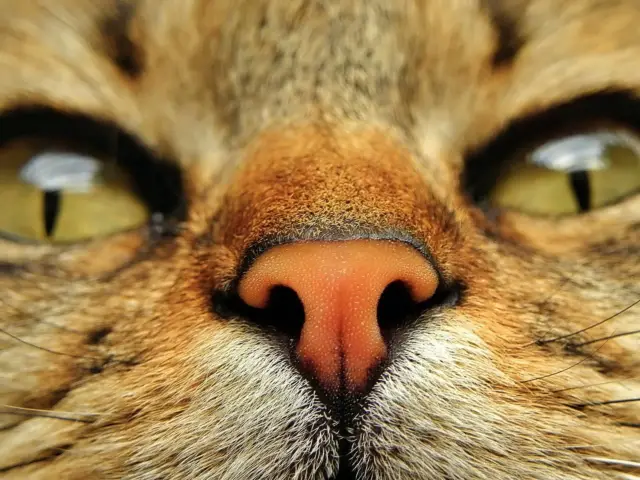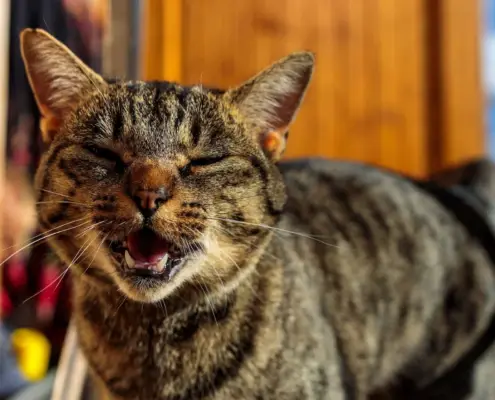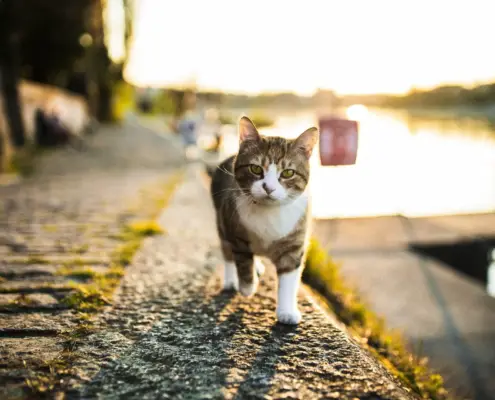Cats are fascinating creatures with many unique behaviors and preferences. One such intriguing aspect is their affinity for the smell of chlorine. It is a mystery that has puzzled cat owners and scientists alike. In this article, we will delve into the science behind cats’ sense of smell and explore the various scents that cats are attracted to. We will also discuss the theories on why cats may be drawn to the smell of chlorine and the potential dangers of their exposure to it. Finally, we will provide tips on how to keep cats safe around chlorine and explore alternative scents that cats may enjoy.

The science behind cats’ sense of smell
Cats have an incredibly powerful sense of smell, which is believed to be at least 14 times better than that of humans. Their olfactory system is highly developed, with a complex network of receptors in their noses that allow them to detect and process a wide range of scents. This keen sense of smell is essential for cats in the wild, as it helps them locate prey, navigate their environment, and communicate with other cats.
The feline olfactory system is particularly sensitive to certain scents due to the presence of specialized receptors. These receptors respond to specific chemical compounds found in various odors, allowing cats to distinguish between different smells. The olfactory bulbs in their brains, which receive and process scent information, are also larger and more developed compared to those of humans. This explains why cats are often attracted to scents that humans may find unappealing or even repulsive, such as the smell of chlorine.
Common scents that cats are attracted to
Cats have a wide range of scent preferences, and what may be appealing to one cat may not be to another. However, there are some common scents that many cats are attracted to. For example, cats are known to be drawn to the smell of catnip, which contains a chemical compound called nepetalactone. When cats come into contact with catnip, either by sniffing or ingesting it, they often exhibit playful and sometimes even euphoric behaviors.
Another scent that cats find enticing is that of valerian root. Similar to catnip, valerian root contains compounds that stimulate cats’ olfactory receptors and can have a calming effect on them. Many cat toys and sprays are infused with valerian root to attract cats and encourage play.
Additionally, some cats are attracted to the smell of certain essential oils, such as lavender or chamomile. These scents can have a soothing effect on cats and may help reduce stress or anxiety. However, it is important to note that not all cats respond positively to essential oils, and some may even have adverse reactions. It is always best to consult with a veterinarian before using any scented products around cats.
Theories on why cats may be attracted to the smell of chlorine
While the scientific community has yet to provide a definitive answer, there are several theories on why cats may be attracted to the smell of chlorine. One theory suggests that the smell of chlorine may resemble certain pheromones or chemical signals that cats use for communication. Cats have scent glands in various parts of their bodies, and they use these glands to mark their territory and communicate with other cats. It is possible that the smell of chlorine triggers a response in cats’ olfactory system, similar to how they would respond to the scent of another cat.
Another theory proposes that cats may be attracted to the smell of chlorine due to its association with water. Cats are known for their aversion to water, but some cats are fascinated by it. The smell of chlorine is often associated with swimming pools, which may pique cats’ curiosity and draw them in. This theory suggests that cats are attracted to the smell of chlorine as a result of their innate curiosity and desire to explore their surroundings.
The potential dangers of cats being exposed to chlorine
While cats may be attracted to the smell of chlorine, it is important to be aware of the potential dangers of their exposure to it. Chlorine is a strong chemical that is commonly used as a disinfectant in swimming pools, cleaning products, and even tap water. When cats come into contact with chlorine, whether by inhaling the fumes or ingesting it, it can irritate their respiratory system, eyes, and skin.
Ingesting chlorinated water can also lead to gastrointestinal distress in cats, including vomiting and diarrhea. Prolonged or excessive exposure to chlorine can have more serious health consequences, such as chemical burns or damage to the respiratory tract. It is crucial to ensure that cats are not exposed to high concentrations of chlorine and to take necessary precautions to keep them safe.
Tips for keeping cats safe around chlorine
If you have a cat and need to use chlorine-based products or have a swimming pool, it is important to take certain precautions to keep your feline friend safe. Here are some tips:
- Ventilation: Ensure proper ventilation when using chlorine-based cleaning products. Open windows or use fans to minimize the concentration of fumes in the air.
- Secure access: If you have a swimming pool, make sure your cat does not have unsupervised access to it. Install a secure fence or cover the pool when not in use to prevent accidental falls or exposure to chlorinated water.
- Filtered water: Consider using a water filter to remove chlorine from your cat’s drinking water. This can help reduce the risk of gastrointestinal distress.
- Alternative cleaning products: Explore alternatives to chlorine-based cleaning products, such as vinegar or baking soda, which are safe for cats and still effective at cleaning.
By following these tips, you can minimize the potential risks associated with cats’ exposure to chlorine and ensure their safety.
Other scents that cats are known to be attracted to
While the smell of chlorine may be intriguing to some cats, it is not the only scent that captures their attention. Cats have a wide range of olfactory preferences, and what may be appealing to one cat may not be to another. Some cats are attracted to the smell of certain herbs, such as mint or catmint. These scents can be used to enhance their environment and provide them with sensory stimulation.
Additionally, cats are known to be curious about the smell of certain foods, such as tuna or chicken. The aroma of these foods can be enticing to cats and may even influence their appetite. However, it is important to note that not all human foods are safe for cats to consume, so it is essential to consult with a veterinarian before offering any new foods to your feline companion.
Understanding your cat’s individual preferences
Each cat has unique preferences when it comes to scents, and it is important to understand and respect your cat’s individual preferences. Some cats may be attracted to the smell of chlorine, while others may find it unappealing. Pay attention to your cat’s reactions to different scents and observe what they show interest in or avoid. This will help you create an environment that is tailored to your cat’s preferences and provide them with a stimulating and enjoyable sensory experience.
Exploring alternative scents that cats may enjoy
If you are concerned about the potential risks associated with the smell of chlorine or simply want to provide your cat with alternative scents to explore, there are many options to consider. As mentioned earlier, cats are often attracted to the smell of catnip, valerian root, and certain essential oils. These scents can be incorporated into toys, scratching posts, or diffusers to create a sensory-rich environment for your cat.
Additionally, you can experiment with other scents that are known to be appealing to cats, such as silver vine or honeysuckle. These plants contain compounds that can trigger a response in cats’ olfactory system and elicit playful behaviors. You can find toys or sprays infused with these scents at pet stores or online.
The unique and mysterious nature of cats’ olfactory preferences
Cats’ affinity for the smell of chlorine is just one example of their unique and mysterious olfactory preferences. Their highly developed sense of smell allows them to detect and process a wide range of scents, some of which may be appealing to humans while others may not. While the science behind cats’ attraction to the smell of chlorine is still not fully understood, it is crucial to ensure their safety and well-being when it comes to their exposure to chlorine. By following the tips provided in this article and understanding your cat’s individual preferences, you can create an environment that stimulates their senses and keeps them safe.
If you enjoyed my article, I would appreciate you sharing it with your network.

Sima Ndlebe
Sima writes for CatBuzz. He is interested in Cats, Health and Fitness, and Entrepreneurship.
Published: 12 February 2024




